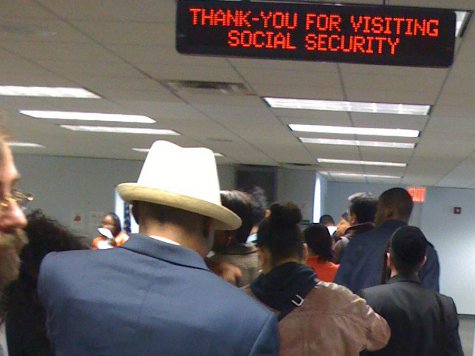The federal government announced the new, official unemployment rate this week: 8.1 percent, down from 8.2 percent. Far fewer jobs were added in April than expected–115,000–so the official rate declined slightly because more people stopped looking for work.
The workforce participation rate is now at its lowest rate in 30 years, with 63.6 percent of adults who could work actually working.
When people can’t find work, they adjust. Families spend less. Children move in with parents. Some people seek additional training to improve their marketable skills. And some former workers apply for various forms of public assistance, such as unemployment compensation, food stamps, or welfare. But since the historic welfare reforms of 1996, welfare for able-bodied adults is generally limited to five years (except in California, where they’ve always sought an exemption). This appears to have caused a shift to other forms of public assistance.
The number of Americans drawing checks from the federal government via Social Security’s Supplemental Security Income Program swelled from 7.0 million in FY 2007 to an estimated 8.0 million in FY 2012, with the growth rate in the program doubling at the onset of the recession. This program is expected to cost taxpayers about $52 billion in FY 2012.
Similarly, the number of Americans suddenly finding themselves “disabled” enough to receive Disability Insurance benefits from Social Security is projected to swell to 11 million in FY 2012, with applications rising more than 5 percent in 2010 alone.
Since the formal end of the recession in June 2009, the number of new people entering the Disability Insurance Program–4.7 million–is double the growth in non-farm payrolls–2.3 million.
In 1975, 1.33 percent of working age adults received Disability Insurance payments from the U.S. Today, the rate of officially disabled Americans of working age has soared to 7.1 percent.
Given all the advancements in workplace safety and ergonomic design, are Americans really 5.4 times more likely to be truly disabled than they were 37 years ago? Or, are government incentives not to work, combined with an economy slowed by overregulation, making us “disabled”?
This post originally appeared on “Speaking Freely,” the blog of the Texas Public Policy Foundation.

COMMENTS
Please let us know if you're having issues with commenting.